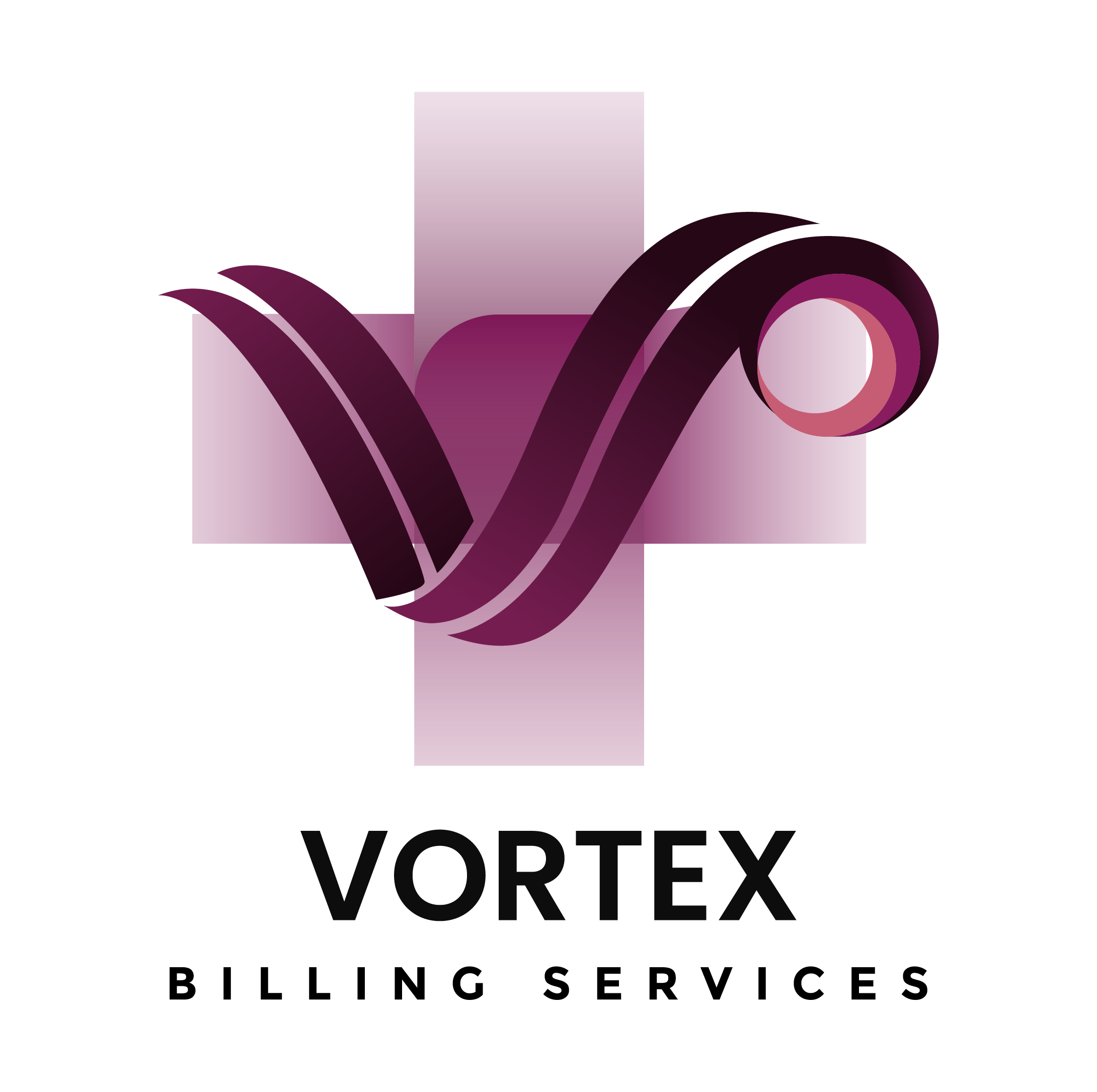The Unseen Anchor: Why Accurate Medical Coding is Mission-Critical for RCM Billing
When it comes to RCM billing, the smallest error in medical coding can spiral into lost revenue, claim rejections, legal penalties, and administrative chaos. But why is accurate coding so crucial for effective revenue cycle management in the first place? The answer lies in the very definition of RCM billing: it’s a financial process that hinges on translating patient care into revenue—efficiently, compliantly, and accurately.
Accurate coding directly influences how healthcare providers in the U.S. get reimbursed for services. Each code not only represents a service provided but also tells insurers and payers that the treatment was necessary, valid, and documented. Incorrect codes—whether overcoding, undercoding, or mismatches—can trigger red flags for insurance companies and regulatory bodies. That results in denied claims, underpayment, or costly investigations. For any practice aiming for financial health and operational efficiency, accurate coding isn’t just recommended—it’s mission-critical.
Especially in the U.S. healthcare environment, where payer rules vary and compliance standards evolve constantly, coding becomes the linchpin for smooth, profitable, and compliant operations. This article will explore how RCM billing depends on accuracy in coding, what mistakes to avoid, and what healthcare practices in the U.S. can do to optimize their revenue cycle.
Understanding RCM Billing in the U.S. Healthcare System
Definition and Purpose of RCM Billing
Revenue Cycle Management (RCM) billing is the systematic approach to managing the administrative and clinical functions associated with claims processing, payment, and revenue generation. At its core, RCM billing connects patient care to the financial outcomes of a medical practice. The process begins when a patient books an appointment and ends when the healthcare provider receives full payment for services rendered.
In the United States, RCM billing is incredibly complex. It must factor in multiple layers—insurance verifications, medical coding, patient eligibility, billing regulations, payer contracts, and compliance mandates. Practices must navigate Medicare, Medicaid, private insurers, and regulatory frameworks like HIPAA, all while maintaining profitability.
Without accurate and timely coding, RCM billing stalls. Claims get denied or delayed. Payments get reduced. And most dangerously, revenue leaks occur silently and persistently—threatening the financial health of even well-established providers.
Modern RCM billing is no longer just about “getting paid.” It’s a full-cycle discipline encompassing technology, analytics, compliance, and strategy. And the very foundation of this cycle lies in how precisely and correctly services are coded from the outset.
Key Stakeholders in the RCM Billing Process
RCM billing isn’t handled by a single department—it’s an orchestrated collaboration involving various healthcare professionals. Here’s who’s involved:
- Medical Coders: They assign diagnosis and procedure codes based on physician documentation.
- Billing Specialists: Translate coded data into insurance claims and patient bills.
- Healthcare Providers: Offer the services and document them accurately.
- Front Desk & Administrative Staff: Ensure patient eligibility and data accuracy during intake.
- Revenue Cycle Managers: Oversee the entire billing process to ensure efficiency and profitability.
- IT Teams & EHR Vendors: Enable seamless data flow and ensure tech systems align with compliance needs.
Each stakeholder’s role hinges on the previous one doing their job right. If a coder misinterprets a physician’s note or selects the wrong code, the entire downstream RCM billing process suffers. In this ecosystem, accurate coding is like a heartbeat—vital, continuous, and foundational.
The Vital Role of Accurate Medical Coding
What Accurate Coding Involves
Accurate coding in RCM billing means translating every patient encounter into the correct Current Procedural Terminology (CPT), International Classification of Diseases (ICD-10), and Healthcare Common Procedure Coding System (HCPCS) codes. These codes must precisely reflect the diagnosis, procedure, and any additional services provided.
But it’s not just about matching codes—it’s about context, specificity, and justification. Coders must understand nuances like:
- Medical necessity: Does the code justify the treatment?
- Modifiers: Were services bundled, multiple, or time-sensitive?
- Place of service codes: Was the treatment done in-office, at home, or in a hospital?
- Payer-specific coding requirements: Is there a difference in how Blue Cross vs. Medicare wants this billed?
Getting it right means money in the bank. Getting it wrong means a backlog of denials, appeals, and frustrated patients.
One of the more challenging aspects is keeping up with constant coding updates. Each year, thousands of codes are added, deleted, or revised. A lapse in updating systems or training staff can derail even a streamlined RCM billing process.
Common Mistakes in Medical Coding and Their Consequences
Even minor errors in coding can result in massive setbacks. Let’s look at the most frequent mistakes and their consequences:
- Undercoding: This happens when a coder fails to bill for all services performed. It results in lost revenue and can make it seem like a provider is underutilizing resources.
- Overcoding: Billing for more complex services than actually performed. This can lead to audits, fines, and in some cases, criminal charges for fraud.
- Unbundling: Billing individual procedures separately when a bundled code should be used. This is seen as an attempt to inflate costs and is a red flag for insurers.
- Incorrect modifier use: Modifiers are used to clarify procedures. Misusing them can result in claim denials or recoupments.
- Failure to update coding standards: Using outdated ICD or CPT codes makes claims non-compliant and non-payable.
In short, coding isn’t clerical—it’s clinical and financial. Getting it wrong disrupts the entire revenue cycle, tarnishes a practice’s reputation, and attracts unwanted attention from auditors and regulators.
Financial Impact of Inaccurate Coding on Healthcare Providers
Revenue Loss from Claim Denials
Denied claims are the Achilles’ heel of many healthcare providers. Most denials—over 80%—are preventable and often stem from coding errors. Every denied claim represents revenue that must be chased, reworked, or written off. And if practices aren’t vigilant, the cumulative loss can be staggering.
Consider this: the average cost to rework a denied claim is around $25 to $118 per claim. Multiply that by dozens or hundreds of monthly rejections, and the financial bleeding becomes real. For new or expanding practices, this can be make-or-break.
Inaccurate coding not only causes initial denials but also delays payment timelines. What should be a 30-day payment cycle stretches into 60 or 90 days, disrupting cash flow and making it hard to manage payroll, pay suppliers, or invest in growth.
Moreover, repeated coding errors can label a practice as high-risk in payer systems. This can lead to increased scrutiny, prepayment audits, or even removal from provider networks—all of which compromise long-term revenue stability.
Increased Administrative Costs and Workflow Inefficiencies
It’s not just revenue loss; it’s also resource drain. When coders make errors, billing teams spend hours correcting and resubmitting claims. That’s time that could’ve been spent on more strategic tasks like patient engagement, financial planning, or improving collections.
This inefficiency adds to operational costs:
- More staff hours on rework
- Higher denial management costs
- Delayed reimbursements affect vendor payments
- Burnout among billing staff and coders
RCM billing thrives on clean claims—that is, claims that pass through the system without errors and get paid the first time. Clean claim rates drop significantly when coding is inaccurate, forcing practices into a reactive, rather than proactive, mode of billing management.
Compliance and Legal Ramifications
HIPAA, OIG, and CMS Requirements in Coding
U.S. healthcare isn’t just a business—it’s a heavily regulated sector. Federal agencies like the Office of Inspector General (OIG), Centers for Medicare & Medicaid Services (CMS), and Health Insurance Portability and Accountability Act (HIPAA) enforce strict guidelines around billing and coding.
Violating these standards—even unintentionally—can result in serious consequences:
- HIPAA penalties for data mishandling or improper coding disclosures
- CMS overpayment demands if overcoding is discovered during audits
- OIG investigations into fraud or abuse patterns due to coding anomalies
Accurate coding keeps you in the clear. It ensures every billed service is medically necessary, appropriately documented, and aligned with national and payer-specific standards.
The Risk of Audits and Legal Penalties
Frequent coding errors don’t just affect revenue—they attract regulatory eyes. Payers, especially Medicare and Medicaid, track billing trends. If your coding looks suspicious—say, excessive high-level E&M codes or repeat diagnostic procedures—you may be flagged for an audit.
Audits can be time-consuming, stressful, and expensive. Worse yet, if fraud or abuse is found, penalties can range from monetary fines to exclusion from payer programs—and even criminal charges in extreme cases.
In an era where compliance is king, accurate coding is your first line of defense. It safeguards your reputation, minimizes legal exposure, and keeps your practice running smoothly.
The Link Between Technology and Coding Accuracy in RCM Billing
How EHR and Coding Software Improve Accuracy
Technology has revolutionized RCM billing, and nowhere is its impact more profound than in improving coding accuracy. Electronic Health Records (EHRs) and advanced coding software reduce manual entry, prevent redundant steps, and provide real-time coding suggestions. These systems analyze physician notes and recommend the most accurate diagnosis and procedure codes, streamlining the process and eliminating guesswork.
The automation in coding software minimizes human error by flagging mismatches between documentation and codes, alerting coders to potential compliance risks. For instance, if a procedure is documented without a corresponding diagnosis code, the system will stop the claim from being submitted until it’s corrected.
Moreover, many EHRs are now integrated with Natural Language Processing (NLP) and Artificial Intelligence (AI) tools. These tools can extract relevant data from provider notes, recognize patterns, and assign codes with remarkable precision. Practices using such tools have seen their claim rejection rates drop significantly and their first-pass claim acceptance rates rise—two critical KPIs in successful RCM billing.
Another advantage is the built-in updates. With thousands of ICD-10 and CPT code changes every year, coding software ensures automatic updates, reducing the risk of outdated code usage. For healthcare practices in the U.S., this is crucial for maintaining compliance and maximizing reimbursements without adding more burden on the billing team.
Choosing the Right Technology Partner
Selecting the right tech partner is just as important as using technology. A reliable RCM software vendor will offer:
- Real-time analytics dashboards
- Automated coding suggestions
- Claims scrubbing tools
- Built-in payer rules
- User-friendly interfaces
- Scalable solutions for growing practices
For medical clinics and healthcare providers in the U.S., especially those expanding or tech-savvy, aligning with a technology-driven RCM solution can be a game-changer. It ensures accuracy, reduces costs, and offers transparency—qualities that modern practices need to stay competitive.
Training and Education: Empowering Staff for Coding Success
The Importance of Continuous Training for Coders
Coding is not a “set it and forget it” discipline. In a rapidly changing healthcare landscape, staying updated is a must. Coders must not only memorize codes—they must understand anatomy, clinical processes, payer rules, and documentation guidelines.
Regular training ensures that coders:
- Understand new code updates and guidelines
- Stay informed on compliance and payer-specific nuances
- Know how to interpret physician notes accurately
- Use modifiers and bundling rules correctly
- Adapt to EHR and coding software enhancements
When coders are trained properly, the result is lower denial rates, faster reimbursements, and stronger compliance. The return on investment for training programs is significant—more clean claims mean fewer reworks and higher profitability.
Encouraging Cross-Training for Administrative Staff
While certified coders are on the frontlines, administrative staff also play a key role in RCM billing. Cross-training front-desk personnel, billing staff, and even providers helps create a culture of accuracy. When everyone understands coding basics and documentation standards, mistakes are caught early—before they affect claims and revenue.
Practices should invest in:
- Quarterly workshops
- Online certification programs
- Compliance webinars
- Coding seminars hosted by AAPC, AHIMA, or CMS
Training is an investment in accuracy, efficiency, and peace of mind—exactly what’s needed in the competitive U.S. healthcare market.
Patient Documentation and Provider Communication
Why Thorough Documentation is the Backbone of Accurate Coding
No matter how skilled a coder is, they can only code what is documented. If providers don’t capture complete, legible, and timely information, the entire RCM billing process falls apart.
Proper documentation must include:
- Chief complaint
- Detailed history of present illness
- Exam findings
- Medical decision-making notes
- Treatment plans
- Specificity of diagnosis and procedures
Coders translate what providers write—not what they think or say—into billable codes. When documentation is incomplete, coders must either guess (a compliance risk) or send the record back for clarification (a delay).
Inaccurate or incomplete notes not only result in undercoding or claim denials, but they also risk audits and compliance issues. Providers need to be trained to document with coding in mind—not just clinically, but financially.
Improving Communication Between Providers and Coders
Open lines of communication between providers and coders help resolve ambiguities, prevent repeat mistakes, and ensure faster claim processing. For example, weekly meetings to review denials and clarify documentation patterns can eliminate confusion.
Healthcare practices should create communication protocols like:
- Shared chat tools in EHR
- Standardized documentation templates
- Real-time coding queries
- Monthly coding feedback reports
When providers and coders collaborate, RCM billing becomes smoother, faster, and more profitable.
RCM Billing for New and Expanding Practices in the USA
Challenges Faced by Startups and Small Clinics
New medical practices and expanding clinics face unique hurdles in managing their revenue cycle. Many rely on limited in-house staff with basic coding knowledge or use outdated billing practices that can’t keep up with modern payer demands.
Some common issues include:
- Lack of trained coding staff
- Over-reliance on manual processes
- Higher denial rates due to inexperienced billing
- Inadequate compliance knowledge
- Poor cash flow due to delayed or denied payments
In a marketplace where compliance and coding accuracy are non-negotiable, these challenges can stunt growth or, worse, lead to failure within the first few years of operation.
Solutions: Outsourcing and Scalable RCM Tools
To overcome these hurdles, many U.S. practices turn to outsourcing. By partnering with an experienced RCM billing provider, new clinics gain instant access to:
- Certified coding professionals
- Up-to-date billing systems
- Real-time claim tracking
- Denial management teams
- Compliance advisors
Outsourcing eliminates the burden of staffing, training, and compliance while providing the scalability needed for growth. Paired with cloud-based RCM platforms, practices can manage their entire revenue cycle from anywhere, with transparency, accuracy, and confidence.
Boosting Transparency and Trust with Accurate RCM Billing
How Transparency Enhances Provider-Patient Relationships
In today’s healthcare environment, patients expect transparency—not only in care but also in costs. Accurate RCM billing plays a direct role in creating trust. When coding is correct, bills reflect actual services rendered, leading to fewer surprises for patients and more confidence in your practice.
Transparency begins with clarity:
- Clear explanations of charges and procedures
- Easy-to-understand itemized bills
- Minimal billing errors and disputes
- Accurate insurance coverage application
Inaccurate coding, on the other hand, leads to inflated or erroneous bills that confuse patients and damage reputations. No one wants to call their doctor’s office to ask why they were billed for a service they didn’t receive. These interactions erode trust quickly and can lead to lost patients and negative reviews.
Practices that prioritize billing transparency also see improved patient satisfaction scores—an essential factor for value-based care models and payer incentives in the U.S. marketplace.
Reputation Management and Online Reviews
Billing mistakes don’t stay private anymore. In the age of Google and Yelp, even minor errors can result in scathing online reviews. A simple denial or overcharge can escalate into a public complaint that scares away prospective patients.
By ensuring accurate coding and transparent billing, healthcare practices protect their reputation online and offline. Every accurate bill is an opportunity to build patient trust, improve loyalty, and stand out in a competitive medical market.
Data Analytics in RCM Billing: Turning Accuracy into Insights
Using Data to Optimize Performance
Accurate coding isn’t just about compliance—it’s a goldmine for data analytics. Practices that use advanced RCM billing platforms can track and analyze coding patterns to improve financial performance, identify bottlenecks, and forecast revenue.
Some key metrics made possible through accurate coding data include:
- Denial rates by code or provider
- Average days in A/R (Accounts Receivable)
- Clean claim rates
- Reimbursement by payer
- Missed charges or undercoding trends
These insights help administrators make smarter decisions about staffing, pricing, documentation practices, and even which services are most profitable.
Practices that harness coding data see a shift from reactive to proactive revenue cycle management. They can spot problems before they affect cash flow, identify training gaps, and adjust operational strategies for better efficiency.
Benchmarking and Competitive Analysis
Coding analytics also allow for benchmarking against industry standards. Practices can measure their denial rates, reimbursement percentages, and documentation completeness against national or regional averages to stay competitive.
Technology-driven RCM billing solutions often come with dashboards and automated reporting, making it easier than ever for U.S. healthcare providers to track performance and drive results.
Compliance-Driven RCM Billing: Meeting Regulatory Demands
Evolving Compliance Challenges in U.S. Healthcare
Compliance is a moving target in healthcare. As regulations shift due to political, economic, and public health changes, practices must stay on their toes. Accurate coding forms the foundation of compliance—without it, nothing else matters.
New initiatives like the No Surprises Act, interoperability mandates, and updates from CMS (Centers for Medicare & Medicaid Services) demand that billing processes are not only accurate but transparent and patient-centric.
Penalties for non-compliance include:
- Hefty fines from federal audits
- Revoked licenses or billing privileges
- Public penalties or “watch lists” affecting reputation
RCM billing must evolve with these changes. That means ensuring coders, providers, and administrators are continuously educated and that systems are updated in real time.
Building a Compliance-Centric Culture
Accuracy and compliance must be embedded into the practice culture. This involves:
- Clear compliance protocols and documentation checklists
- Regular internal audits and risk assessments
- Encouraging a whistleblower-friendly environment
- Mandatory coding and compliance training for all staff
The practices that thrive in the U.S. market are those that treat compliance as a strategic advantage, not just a legal requirement.
The Future of RCM Billing: Automation, AI, and Accuracy
Emerging Trends in Coding and Revenue Cycle Management
The future of RCM billing lies in automation and artificial intelligence. These technologies are already reshaping how practices code, bill, and manage their revenue.
Emerging tools include:
- AI-powered coding assistants: These use machine learning to read physician notes and auto-suggest accurate codes.
- Robotic Process Automation (RPA): RPA bots handle repetitive billing tasks, reducing errors and freeing staff for higher-level responsibilities.
- Predictive analytics: Forecast denial risks, cash flow patterns, and payer trends.
Practices that invest in these tools are not only improving accuracy—they’re future-proofing their revenue cycle. They can adapt faster to payer changes, scale effortlessly, and focus on delivering quality care.
What U.S. Practices Should Focus on Going Forward
As U.S. healthcare moves toward value-based care and patient-centric models, RCM billing must follow suit. Practices should focus on:
- Seamless integration of tech tools
- Real-time data visibility
- Emphasis on compliance and training
- Transparent communication with patients
The future of billing isn’t just accurate—it’s intelligent. Practices that make accuracy a priority today will reap the rewards tomorrow.
Conclusion: Accuracy is the Heart of Profitable and Compliant RCM Billing
In the complex and competitive world of U.S. healthcare, accurate coding isn’t optional—it’s essential. From maximizing reimbursements and avoiding denials to ensuring compliance and building patient trust, coding accuracy forms the foundation of effective RCM billing.
Whether you’re running a small clinic or managing a multi-location healthcare network, investing in accurate coding processes, technology, and staff training will pay off in more ways than one. It leads to smoother operations, happier patients, cleaner claims, and fewer regulatory headaches.
For medical practices in the USA looking to scale, stay compliant, and deliver value, the path is clear: prioritize coding accuracy, and you’ll unlock the full potential of your revenue cycle.
FAQs
1. What is RCM billing, and how does coding impact it?
RCM billing is the process of managing a healthcare provider’s revenue from appointment scheduling to final payment. Coding accuracy is essential in this process as it ensures that services are billed correctly and reimbursed promptly.
2. What are the most common coding mistakes that affect RCM billing?
Common mistakes include undercoding, overcoding, misuse of modifiers, and outdated codes. These lead to claim denials, revenue loss, and compliance issues.
3. How can technology improve accuracy in RCM billing?
Technology like EHRs, coding software, and AI tools can auto-suggest accurate codes, prevent duplicate billing, and flag errors, leading to faster, more accurate claim submissions.
4. Is outsourcing RCM billing a good idea for new practices?
Yes, outsourcing provides access to expert coders, compliance knowledge, and advanced tools, helping new practices avoid costly mistakes and focus on patient care.
5. What should I look for in an RCM billing partner in the USA?
Look for transparency, compliance expertise, up-to-date coding practices, real-time analytics, and scalability to match your practice’s growth.



